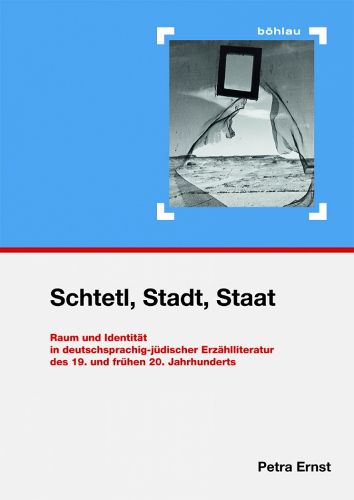Readings Newsletter
Become a Readings Member to make your shopping experience even easier.
Sign in or sign up for free!
You’re not far away from qualifying for FREE standard shipping within Australia
You’ve qualified for FREE standard shipping within Australia
The cart is loading…






Text in German. For the first time, the study examines German-language Jewish narrative texts from the 19th and early 20th centuries (among others by Leopold Kompert, Karl Emil Franzos, Nathan Samuely, Fritz Mauthner, Max Grunfeld, Eduard Kulke, Selig Schachnowitz, Theodor Herzl, Ernst Sommer, Karl Teller, Hugo Bettauer, Georg Hermann, Leopold Hichler, Sammy Gronemann). The research interest is in the connections between space, place and identity, and how these are narratively unfolded in novellas, short stories and novels. The central assumption refers to the fact that the secular Jewish literature emerging in the German-speaking countries of this time is not only to be understood as a self-confident expression of aesthetic production, but also as an important medium of non-literary understanding of meaning in the course of the debates about a contemporary Jewish self-image, namely in to an extent that has not been sufficiently appreciated in literary studies and history.
$9.00 standard shipping within Australia
FREE standard shipping within Australia for orders over $100.00
Express & International shipping calculated at checkout
Text in German. For the first time, the study examines German-language Jewish narrative texts from the 19th and early 20th centuries (among others by Leopold Kompert, Karl Emil Franzos, Nathan Samuely, Fritz Mauthner, Max Grunfeld, Eduard Kulke, Selig Schachnowitz, Theodor Herzl, Ernst Sommer, Karl Teller, Hugo Bettauer, Georg Hermann, Leopold Hichler, Sammy Gronemann). The research interest is in the connections between space, place and identity, and how these are narratively unfolded in novellas, short stories and novels. The central assumption refers to the fact that the secular Jewish literature emerging in the German-speaking countries of this time is not only to be understood as a self-confident expression of aesthetic production, but also as an important medium of non-literary understanding of meaning in the course of the debates about a contemporary Jewish self-image, namely in to an extent that has not been sufficiently appreciated in literary studies and history.